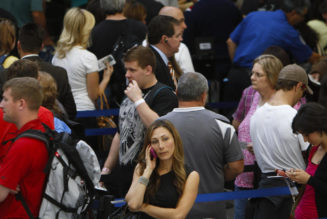
Our experts answer readers’ investing questions and write unbiased product reviews (here’s how we assess investing products). Paid non-client promotion: In some cases, we receive a commission from our partners. Our opinions are always our own.
- I’ve been to 16 countries so far, but I haven’t had to spend irresponsibly to travel this much.
- The first step to traveling on a budget is research — don’t just guesstimate how much you’ll need.
- You can earn rewards with a travel credit card and by sticking to a favorite airline and hotel vendor.
Traveling and experiencing new cultures is one of my favorite horizon-expanding activities. I learn about myself and gain new life perspectives every time I have the opportunity to visit a new country. I recently counted how many countries I’ve been to for an icebreaker exercise — I am at 16 and counting.
As a financial planner, travel is usually one of the top five spending line items I see when I review someone’s budget. However, what I typically see is folks spending impulsively or dipping into their one “savings pot” whenever a new trip comes up. My goal is to walk you through one of the best systems for travel that I have found — including one that I rarely see people use.
See Insider’s picks for the best budgeting apps »
1. Research prices in advance
This is the step folks skip the most, but one that is the most crucial for financial success. Sit down at the beginning of the year to plan what your annual priorities, trips, and anticipated travel costs will be. Use it as an opportunity to dream first, then come down to reality about your budget. It isn’t a time to guesstimate.
Most flights are searchable and bookable within about a year of your anticipated travel date. You can always research hotel and short-term rental costs in your destination city to get a sense of potential accommodation types and costs. Lastly, research rental cars or tours you might want to do while there.
This might seem like a lot of work, but when folks don’t do this, it leads to their travel budget blowing up, making what should be an extremely pleasant experience, stressful. Once you’ve gone through that annual exercise to determine your budget, you can figure out how to pay for it!
See Insider’s picks for the best travel insurance companies »
2. Get a travel credit card
There are loads of discussion about credit card hacking and selecting the best credit card for travel rewards. I think most folks spend too much time chasing one-time sign-on rewards. Instead, I believe intentionally selecting one card and using it consistently is the best way to get benefits. If travel is a focus for you, then I recommend considering a credit card that offers travel rewards.
I personally use my travel rewards credit card for my day-to-day spending all year round. This allows me to accumulate lots of points to book flights and hotels or shop in general. I am planning to take my mother to Paris next year and will use the points I’ve accumulated over the last two years to pay for four tickets in full.
Many travel-related cards also include complimentary lounge access, which can be extremely expensive if purchased separately. I love to utilize lounges when traveling as a family. These kids eat a lot and free food is a big benefit!
3. Get rewards for booking hotels
My husband and I travel a good bit for work and personal reasons every year. We book all our travel business and personal travel through a Hotels.com account, which lets us earn free nights over time. I currently have five reward nights to redeem, which I will also use to cover my mother’s hotel room for the duration of our trip.
4. Find your preferred airline to maximize rewards
When planning your travel, it’s important to consider which airports you typically fly out of and which airlines service that airport. For our frequent travel, we have focused on Delta and Southwest Airlines as our primary airlines. We try to book with them whenever possible, which allows us to earn status with those airlines and have a better flying experience.
In our case, we have priority boarding, free checked bags, and the potential for free premium economy and first-class upgrades. That’s because we’ve intentionally booked with two airlines that service our local airports. I’d say that’s a good deal!
5. Use a sinking fund
Using a sinking fund is the one thing most people won’t do, but absolutely should! Once you’ve estimated how many trips you will take, how much they’ll cost, and approximately how much might be covered by credit cards or other rewards programs, it’s important to put some money aside every month to cover any potential shortfalls. Folks often overlook costs like taxis, meals out, excursions, tours, shopping, and museum admission fees.
Your travel sinking funds should be in a separate account or a separate bucket than your emergency fund to ensure you are not dipping into your rainy day fund to pay for a Bahamas cruise.
When setting up this system, keep in mind the timeline you have for your trip. If your trip is in six months, take the total approximate amount you expect to spend and divide it by six. Set up automated monthly transfers to this account to ensure you don’t fall short of your goal.
When set up appropriately, this system will allow you to save money on travel while also upgrading your overall experience.










